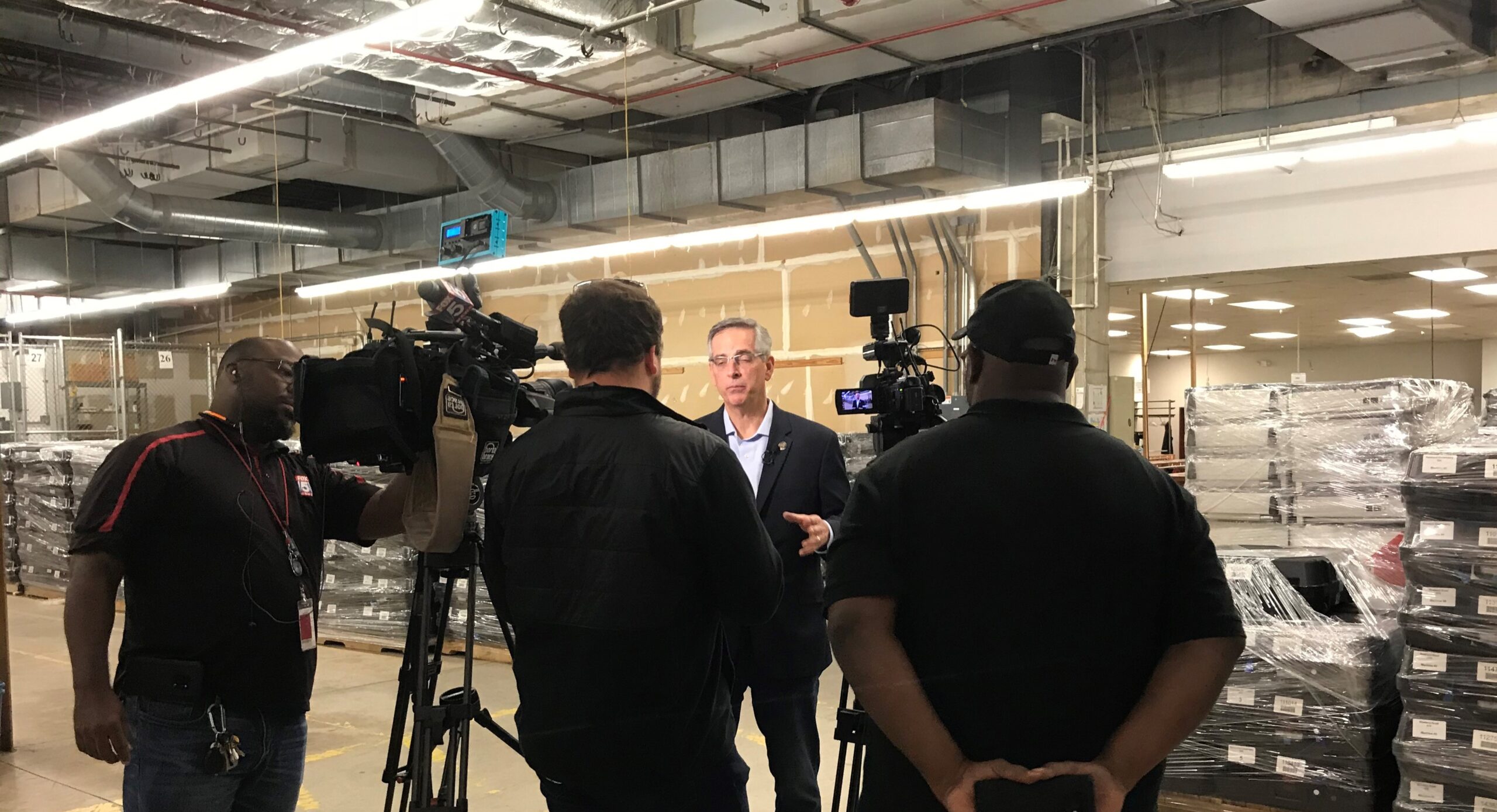Last Of New Voting Machines Expected To Be Delivered To Georgia Counties Next Week

Georgia Secretary of State Brad Raffensperger speaks to reporters Dec. 30 shortly before a delivery of the state’s new voting machines arrived in DeKalb County.
Emil Moffatt / WABE
Voters in nearly 20 Georgia counties have cast ballots using the state’s new electronic voting machines since last November.
But upwards of a million people are expected to be using the devices for the first time next month during the state’s presidential primary, and some Georgia counties are still waiting to get the rest of their machines.
Secretary of State Brad Raffensperger says the remaining 10% of equipment will be delivered to counties by next Friday. He admits it’s a tight timeline. But he says a special election in southwest Georgia last week shows that kind of quick turnaround is possible.
“They got their machines and in 10 days they’d stood up and were ready to start an election,” Raffensperger said.
Raffensperger says inexperience with the equipment on the part of voters and poll workers led to some issues there, but he says those problems didn’t keep anyone from actually voting.
He says all counties across the state have had at least two voting machines on hand for months in order to train elections staff. Six counties in Georgia took part in a pilot using the new machines in local elections last November. There have been two special elections so far this year, both using the new equipment.
A bigger test will come March 24, when all Georgia counties use the new machines.
“We understand that there will be an awful lot of eyeballs on Georgia,” Raffensperger said. “And we’re excited about that, and that’s why we continue to tell all the counties that this is all about training, training and training.”
For the first time in nearly 20 years in Georgia, the voting process includes paper documentation of the voters’ choices, which will be fed through a scanner. The printout includes a text summary of the voters’ choices along with a QR code, which is what the scanner reads to record the vote.
After the ballot goes through the scanner, it falls into a locked ballot box.








